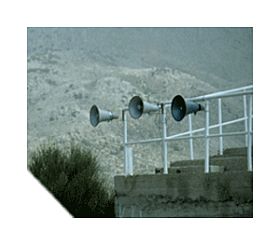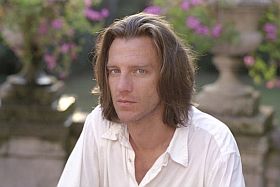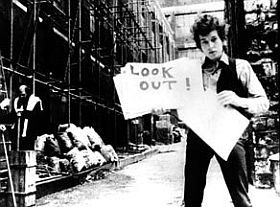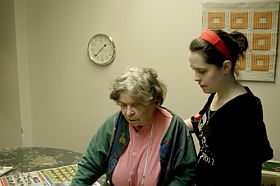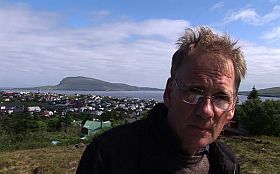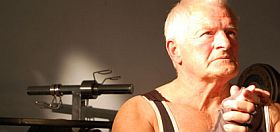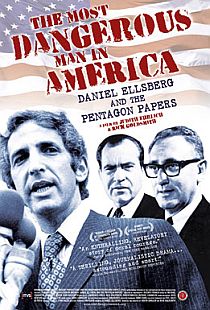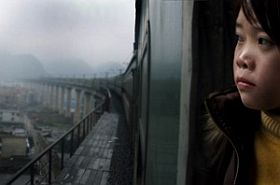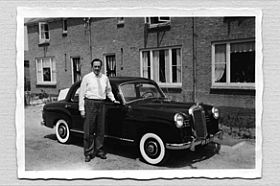”…Katrin Ottarsdóttirs empatiske og sympatiske film… Der står en nøgen sandhed om eksistensen tilbage, som ordene bærer vidnesbyrd om. Usmykkede, ligefremme og med klare linjer.” (Henrik Wivel i Weekendavisen Bøger 26. februar-4. marts 2010.)
Filmen vises i morgen, 3. marts 17:00 i Biffen, Aalborg og – NB flyttet til – mandag, 22. marts 19:00 i Nicolay Biograf, Kolding.
Her i dette billede er kameraet en sjælden gang i øjenhøjde med Jóanes Nielsen. I øjenhøjde med den berømte mand, den store digter. Dette landskab er fotografen og han, filmens medvirkende fælles om. Han ligger også ned i en enkelt scene, fordi hans kæreste har lagt sig ned. Men ellers er den lave kameraposition gennemgående. Katrin Ottarsdóttir har nærmet sig den frygtindgydende mand med usikre skridt og i stor forsigtighed. Filmen er præget af det. Hendes tilstedeværelse i samtalerne er yderst nedtonet. Jeg havde ventet det modsatte, i film nummer tre ville hun træde ind i scenen, efter ganske lidt i samværet med Hans Pauli Olsen og noget mere sammen med Tóroddur Poulsen. Men hendes film er til gengæld yderst tilstedeværende hos et meget intenst levende menneske. Og så var det altså den udvikling hun ville, den rytme af indsigt gennem de tre arbejder.
Det handler om en digter i Torshavn. Om Jóanes Nielsen, velkendt i byen, velkendt i sin branche. Han causerer om sit liv og sit kunstneriske arbejde, underholdende, og han læser op af sine digte, medrivende. Det foregår i hans hus, i byens gader og havn og i byens omegn. Alt er set smukt, rummene, stederne, landskaberne.
Topografien dominerer og ordner. Nielsens fortælling er vist nok handlingstråden. Digtoplæsningerne er det egentlige indhold. De er stærke. Fra det barskt usentimentale til det ømt følsomme. To handlingsforløb knytter an, en aflivning af kattekillinger hen over midten af filmen og så i den store slutning selve samværet med kvinden fra så mange steder i digtene. Henrik Wivel kalder kombinationen af digtoplæsning (og monolog vel) og sted for ”pittoreske positurer”. Jeg tror det er mere end det. Jóanes Nielsen er selvfølgelig anbragt på steder og foran udsigter, som ikke kun er hans. Det er også Katrin Ottarsdóttirs og filmens og mine. Det er ikke en biografi, det her. Det er eksistens, og topografien er meddigtende i filmens lyrik. I hvert fald tænkt sådan. Måske er det bare ikke lykkedes helt.
Og det har med klipningen at gøre. De enkelte klip er ofte brutale, og de slår mere i stykker end de føjer sammen. Jeg forstår simpelthen ikke opklipningen af enkeltscenerne, som jo er så bundet af deres markante topografiske (og scenografiske) markering, den adskillelse af sammenhængende materiale danner i montagen ikke for mig efter første gennemsyn en ny sammenhæng, biografisk, tematisk i causeriet eller dramatisk i filmens forløb. Jeg synes indtil videre, det er en skam. For mig at se dog kun en lille – hedder det skønhedsplet – på et smukt, smukt filmværk. Empatisk og sympatisk, nemlig.
Katrin Ottarsdóttir: Sporene gror ud af ord, Danmark 2009, 76 min. Manuskript, fotografi og klip: Katrin Ottarsdóttir, lyd: Iben Haar Andersen, produktion: Hugin Eide. Produceret af Blue Bird film www.bluebirdfilm DVD-salg fra medio marts hos boghandlerne. Jóanes Nielsens seneste samling Broer af sultne ord er netop udkommet på forlaget Torgard www.forlagettorgard.dk




